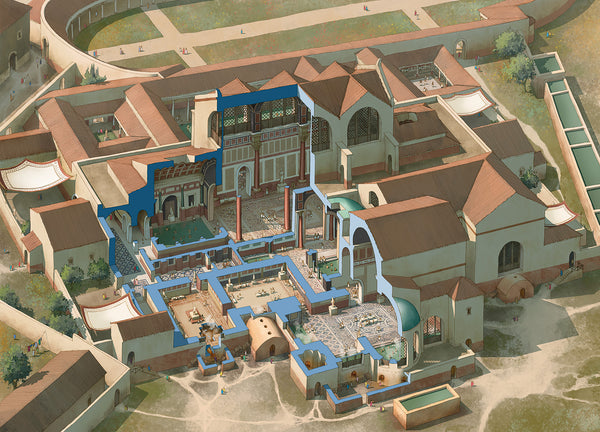A Walk Through Ancient Rome - Review
By Owain Williams
While the many archaeological sites of Rome are a marvel to visit, it can be difficult to imagine Rome in its heyday when you’re there. Besides a few more well-preserved buildings, such as the Colosseum or the various triumphal arches, most of the remains – a pillar here, an inscription there, a low wall in the distance – offer the barest hint of what the buildings looked like, let alone what the streets of Rome would have looked like when filled with Romans.
Philip Matyszak’s A Walk Through Ancient Rome offers readers a companion for a typical walking tour of the city, guiding the reader through the Augustan regiones of the ancient city, with each chapter representing a day of walking. The tour “takes in the grand monuments such as the unforgettable Colosseum and the imperial palaces, but the intention is to step beyond that to give the reader a flavour of the city as a whole” (p. 7). As such, the book not only offers detailed descriptions of the various buildings as they would have appeared in the ancient city, but also includes stories from Roman history – what happened where and who it happened to – and quotes detailing the atmosphere to breathe life into the city. Matyszak’s writing style gives the book the impression that the reader is listening to a tour guide rather than reading a tourist itinerary, who occasionally makes mistakes but quickly corrects them. For example, when discussing the basilica of Maxentius, which Constantine appropriated for himself, the narrator says “the basilica of Maxentius, er ... of Constantine” (p. 90). Such humorous phrasing is relatively infrequent, so it does not detract from the overall tour.

The tour through the ancient city is accompanied by a series of line drawings that show the reader what some of the buildings may have looked like. These line drawings are not labelled, however, which sometimes makes it difficult to tell which building is being depicted, as several can be the focus of the discussion in the space of a page or two, but it is usually clear. Similarly, each chapter – or day – begins with a black and white picture of the relevant section of Italo Gismondi’s miniature of Rome marked with sites of interest. Unfortunately, there is no map of the city of Rome as a whole showing the reader where the different regiones are. This would have helped to orientate the reader further. Yet there is a section titled ‘The twenty-first century walk’ at the end of each ‘day’, explaining what a modern tourist is likely to experience when they visit the sites today, including recommendations of cafes and public transport.
Matyszak seems to be a little confused as to precisely when in the history of the city of Rome the ancient tour is meant to take place. The book’s blurb says “step back in time to the fourth century AD”, which Matyszak reiterates in the preface, “for Rome was never grander or more magnificent than just before it fell” (p. 7). Yet a page later Matyszak writes that “the walk describes what a tourist would experience walking the streets of fifth-century Rome” (p. 8). This is, of course, a relatively minor issue, but it is not the only mistake in the book, although they were few and, again, minor. Some of the quotes from ancient authors were mis-referenced, for example, which is only something you notice if you look for it.
As I have said, these issues are very minor, and they hardly detract from the core of the book. A Walk Through Ancient Rome is an informative, insightful, and at times humorous portrait of the eternal city. Readers planning to visit Rome who are unfamiliar with Roman history and the modern city and its archaeological sites would certainly benefit from this book. It is small enough to not be a hassle to take with you.
P. Matyszak, A Walk Through Ancient Rome: A tour of the historical sites that shaped the City (London: Michael O’Mara, 2024). ISBN: 9781789295221. £14.99 (Hardback).

